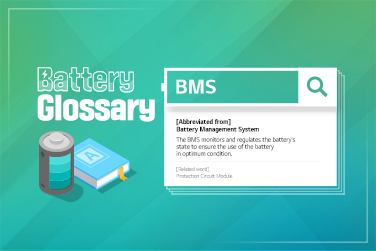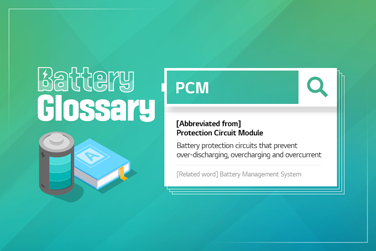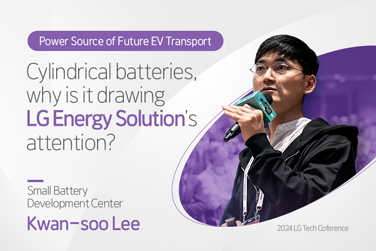Electrical devices that require a lot of electric power such as EVs have many cells in their battery packs. But what happens when some cells still have charge while others are depleted? Today, we will look at “cell balancing,” the solution to this question.
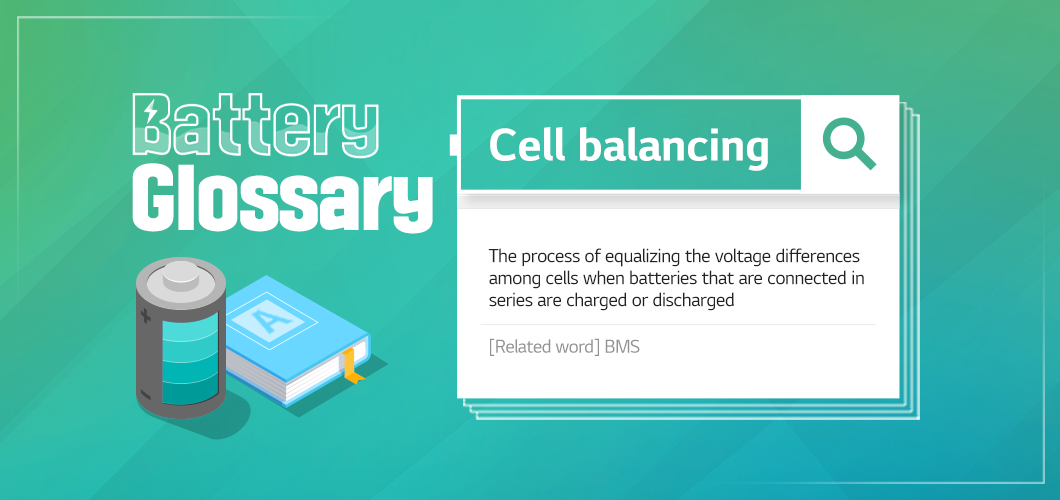
What is Cell Balancing?
A cell is the basic unit of a battery. The voltage values of the individual cells can vary due to external factors or other issues caused in the manufacturing process. For example, when two cells connected in series are charged, the first cell could reach 4.2V while the second cell stops at 4.0V. The method used for equalizing the cell voltages is called “cell balancing.”
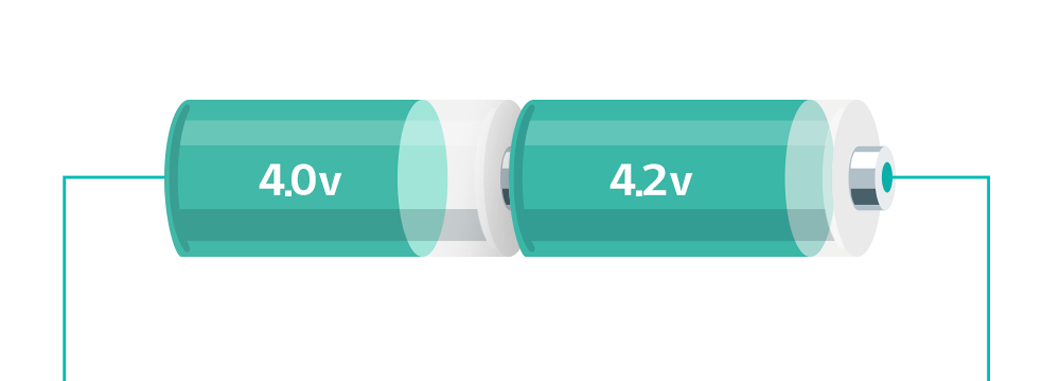
Cell balancing is essential because cell imbalance can undermine battery capacity and life, raising the risk of fire caused by overcharge or over-discharge. Cell balancing is broadly classified into two types: Passive cell balancing which dissipates the cell charge using resistors and active cell balancing which transfers the charge from a high-voltage cell to a low-voltage cell.
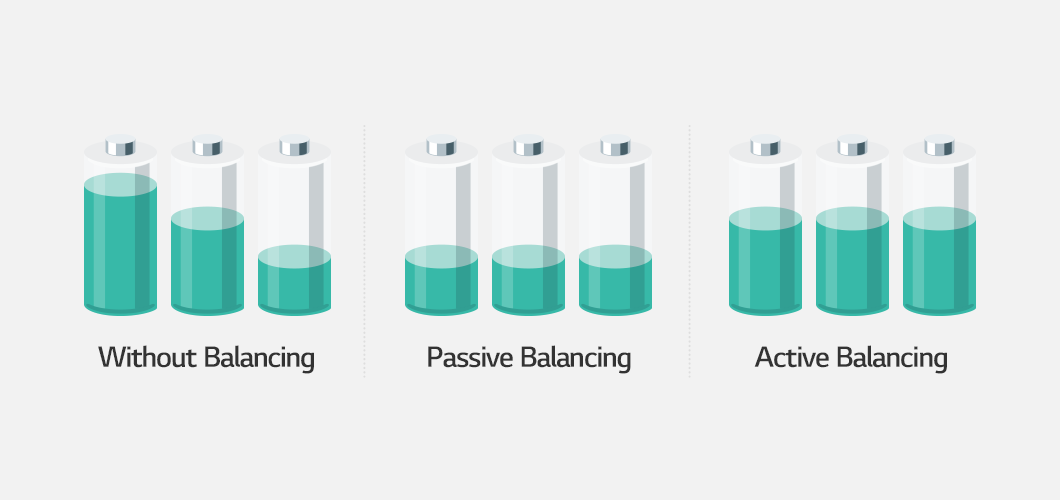
Passive Cell Balancing
In passive cell balancing, energy from the higher charged cell is removed by being dissipated as heat to make all the charge levels same. This method is simple and inexpensive. However, it is inefficient because the excess voltage is not utilized, but consumed. Also, it is applicable during charging only.
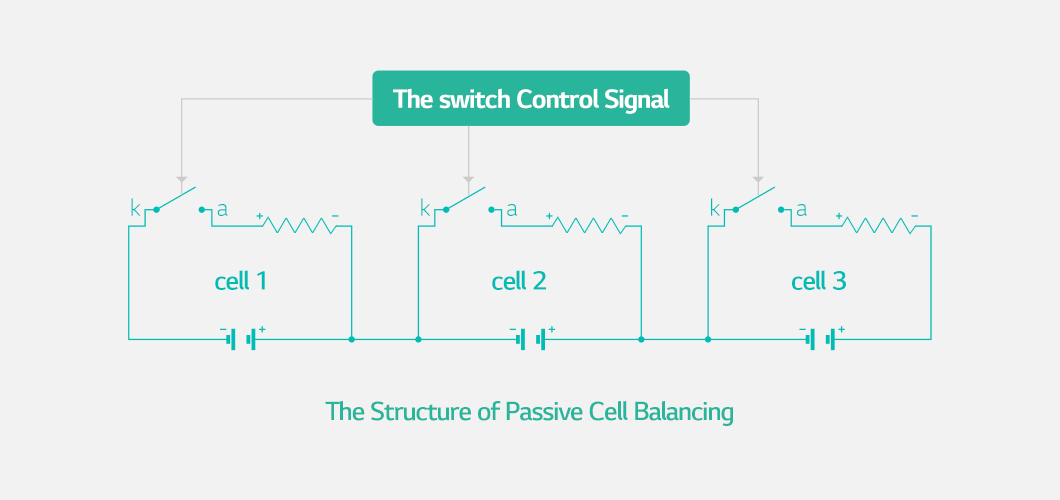
Active Cell Balancing
In active cell balancing, the excess charge is transferred to the low-charged cells to redistribute energy and equalize the cells. Unlike the passive balancing, this method distributes energy, instead of emitting heat, making it energy efficient and charging faster. It can be adopted both for charging and discharging but costs more because of the complexity of additional circuits.
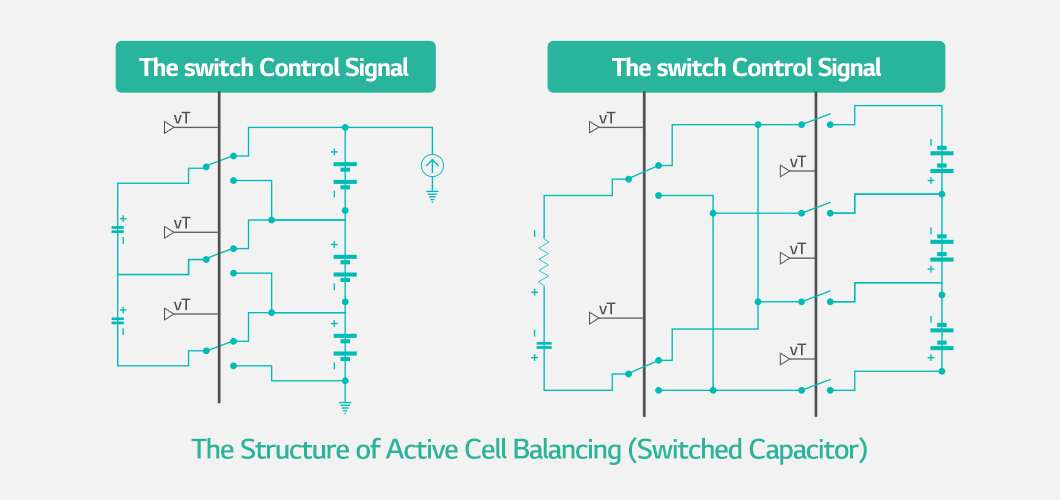
Both the active and passive balancing happen in Battery Management System (BMS). The Cell Monitoring Unit (CMU) in BMS checks the cell’s state and starts balancing when necessary, ensuring safe battery use. Just like this one, there are many safety technologies employed for a longer and safer use of batteries.
